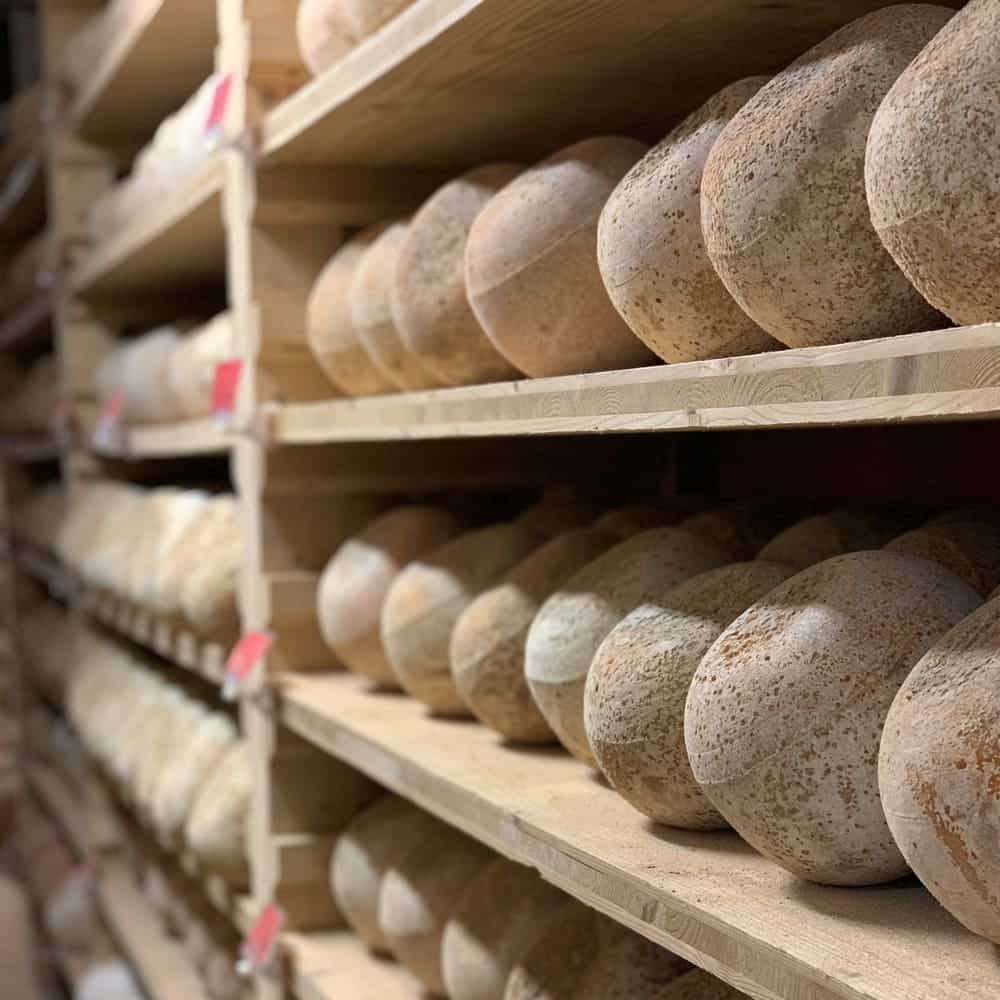Gastronomy in the North, "cheeses like no others".
Philippe Olivier (R) campaigns in the region and throughout France to defend raw-milk cheeses.
Today is the 9th National Cheese Day. Philippe Olivier, fromager-affineur in Boulogne-sur-Mer and Lille, and president of the Syndicat des crémiers et fromagers-affineurs, explains the specificities of our regional specialties.
Is the Nord-Pas-de-Calais a region of cheeses?
Yes, you could say that this is a region with a large number of cheese names (80 to 90), but only a third of them are historic, traditional cheeses. Another third are photocopies, i.e. Northerners making Camembert or goat's cheese. And a third are small-scale productions. So, if we want to be serious, we can say that there are around thirty cheeses culturally attached to the region.
What are you doing in these cellars?
Most of our cheese is made from cow's milk, as our climate is not suited to goat's milk cheese - to make a good goat's milk cheese, the animals have to eat very dry grass. The region's only AOC cheese is Maroilles and its derivatives. Then there's Mimolette. Then there are abbey cheeses like Mont des Cats, which people in the Nord region enjoy for breakfast. And then there's the multitude of long-established cheeses, some of which have disappeared for a while and then reappeared, such as Bergues, Vieux-Boulogne, Coeur d'Arras or Crayeux de Roncq.
Could Le Bergues have disappeared?
Yes, it's a cheese that flirted with extinction and was saved. The film Bienvenue chez les Ch'tis did it a lot of good, as it did Maroilles.
"Bienvenue chez les Ch'tis" has given the northern cheese a serious boost...
Exactly. Since then, I've developed sales throughout France. I have a hundred cheese-making friends all over France whom I now supply, to meet the demand from customers who, after seeing the film, want to try it.
Does northern cheese necessarily mean strong cheese?
In a region like ours, we couldn't make cheeses like any other... So, for example, we have cheeses like Maroilles, which have the particularity of having the same color as our famous red bricks... When you're in the North, you want cheeses that warm you up. If we lived in Biarritz, we wouldn't necessarily want to eat Maroilles. Nothing is made by chance. A cheese depends on the culture and geography of its region.
Today, we're seeing an increasing number of cheeses named after Opal Coast villages, such as pavé de Wissant. What's your opinion?
They're nicely made cheeses, but not very tasty. But they demonstrate the liveliness of cheese in our region.
You're an ardent defender of local cheeses in general, and those from our region in particular. What do you do to promote them?
Many conferences around the world. I've also published several books on Northern cheeses. And in France, as I mentioned, cheese makers ask me to send them cheeses. At the same time, I send them beer, the "Bière à frometon" that I created with a brewer. I use it to mature the cheeses, and to taste them.
Do Northerners eat a lot of cheese?
Average consumption in France is 24 kg per person per year. In our region, that figure is around 30 kg. So yes, we're big consumers, and that's because we eat it at several meals, particularly breakfast.
Maredsous: when monks hand over...
If France is the land of cheese, Belgium is no exception. And often, the name of a Belgian beer is associated with that of a cheese. Take Maredsous, for example. The abbey stands on its solid grey stones in the middle of a magnificent plateau, the proud image of more than two centuries. The northerly wind creeps through the alleys between the church, the chapel, the Collège Saint-Benoît and the multitude of buildings that make up the abbey (including the cheese factory). But nothing seems to disturb the serenity of the place. Not even tourists. And yet there are 400,000 of them every year! But the monks of Maredsous - sadly dwindling in number to just thirty or so today - know how to preserve their contemplative spirit. There was a time when these monks were busy, between spiritual and intellectual work, maturing Maredsous cheese. While the beer of the same name has never been produced on the abbey site, the cheese has always been matured there. A soft cheese, "of the Port-Salut or Gouda type, with a special feature: it is matured naturally, without the addition of ferment or salt", explains Mr Bethuer, technical manager of the cheese dairy. The days of "monastic maturing" are long gone. In the 60s, the business was handed over to Belgian families. Then, in 1991, it was taken over by the French industrial giant Bel, producer, among others, of La Vache qui rit and Babybel... The product's image could have been tarnished. Because in Belgium, or on this side of the border, in the collective imagination, an abbey cheese is inevitably linked to monastic activity. To the charm of tradition. But today, the monks, who continue to receive royalties on the cheese - and on the beer, too, for that matter - have little say in the brand's image. Despite all this, Maredsous is still as successful as ever, with some 1,200 tonnes of the product in its original form leaving the cheese dairy every year. And that's not counting the innovations and other products matured at the abbey. In all, over 5,000 tonnes of cheese are matured at Maredsous every year. "The Maredsous brand still has a connotation of quality in Belgium," notes Mr. Bethuer. It's even the leading brand in Belgium. "Its image is, of course, all about the abbey. Calm, serenity and contemplation are the hallmarks of good taste. And even if an industrial giant is behind this production, visitors and fans of Maredsous will reply that the age-old setting of the maturing process is (almost) everything... B.B.
Directed by Nord Éclair
Discover another article


